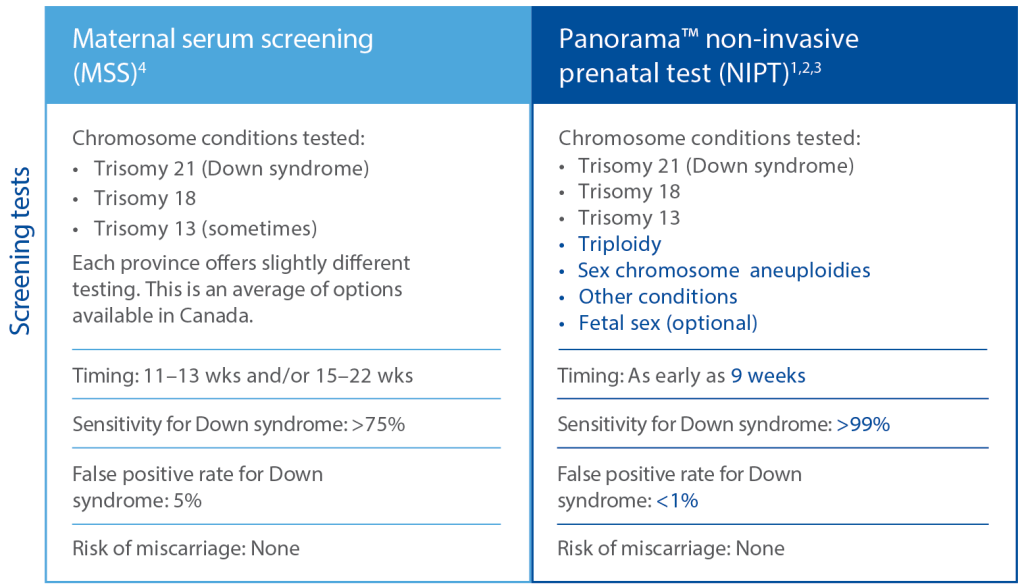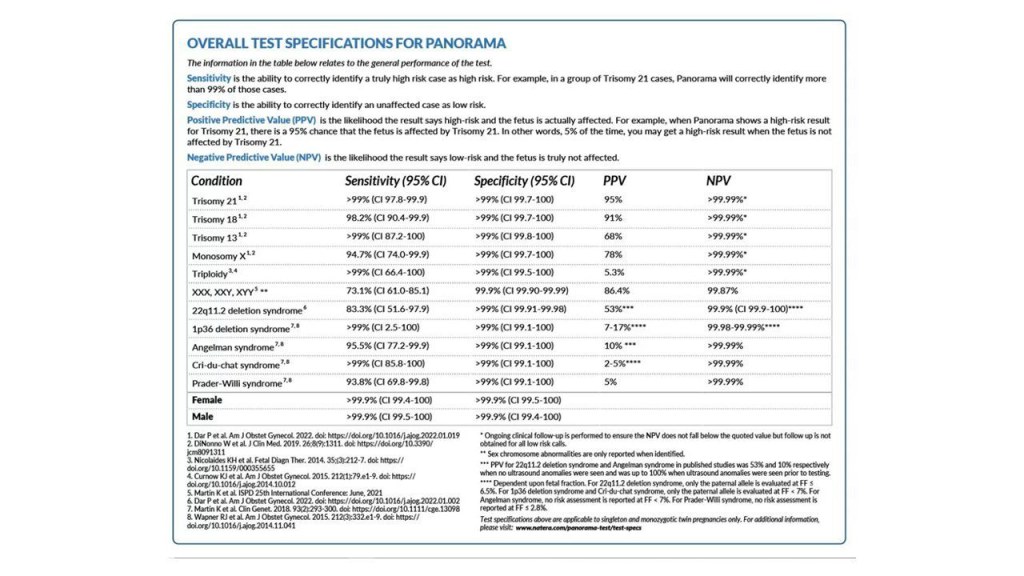How Long Do Panorama Test Results Take? Discover The Timelines Now And Take Action!
Panorama Test Results: How Long Does It Take?
Greetings, Happy People! In this article, we will explore the duration of panorama test results and provide valuable information for your understanding. The Panorama test is a non-invasive prenatal screening test that detects common genetic conditions in a baby, such as Down syndrome, Edwards syndrome, and Patau syndrome. Let’s dive into the details and discover how long it takes to receive the results.
Introduction
The Panorama test is a revolutionary advancement in prenatal screening, providing expectant parents with valuable information about their baby’s health. It is a simple blood test conducted during pregnancy that analyzes the baby’s DNA for genetic abnormalities. This test has gained popularity due to its accuracy and early detection capabilities, allowing parents to make informed decisions regarding their pregnancy.
2 Picture Gallery: How Long Do Panorama Test Results Take? Discover The Timelines Now And Take Action!
Now, let’s explore the time frame for receiving the Panorama test results. It’s essential to understand that the duration may vary depending on various factors, including the laboratory’s workload, shipping time, and the specific healthcare provider.
What Factors Influence the Duration of Panorama Test Results?
Several factors can influence how long it takes to receive your Panorama test results:

Image Source: lifelabsgenetics.com
1️⃣ Laboratory Processing Time: Once your blood sample reaches the laboratory, it undergoes a thorough analysis. The laboratory’s workload and efficiency play a significant role in determining the processing time.
2️⃣ Shipping Time: After the blood sample is collected, it needs to be shipped to the laboratory for analysis. The shipping time can vary depending on your location and the courier service used.
3️⃣ Healthcare Provider’s Process: Different healthcare providers may have distinct processes for handling and sending the samples to the laboratory. It’s essential to consult with your healthcare provider to understand their specific procedures and timelines.
4️⃣ Verification and Reporting: Once the laboratory completes the analysis, they verify the results and generate a comprehensive report. This step ensures the accuracy of the results before they are released to the expectant parents.
How Long Does It Typically Take to Receive Panorama Test Results?

Image Source: innermosthealthcare.com
On average, it takes about 5-7 business days to receive the Panorama test results. However, it’s crucial to note that this is an estimate, and the actual duration may vary. Factors such as those mentioned earlier can influence the overall time frame.
It’s advisable to consult with your healthcare provider or the laboratory conducting the test to get a more accurate estimate based on your specific circumstances.
Who Receives the Panorama Test Results?
The Panorama test results are typically sent to the healthcare provider who ordered the test. The healthcare provider then communicates the results to the expectant parents during a follow-up appointment or via a phone call. The healthcare provider plays a vital role in interpreting the results and providing appropriate guidance and support.
When Can You Expect to Receive the Panorama Test Results?
As mentioned earlier, it usually takes around 5-7 business days to receive the Panorama test results. It’s essential to factor in the time required for shipping the sample to the laboratory and the laboratory’s processing time. Your healthcare provider can provide a more accurate timeline based on their experience and the specific laboratory they work with.
Where Can You Access Panorama Test Services?
The Panorama test is available at various healthcare facilities, including specialized prenatal clinics and hospitals. It’s essential to consult with your healthcare provider to determine the nearest location offering the Panorama test. They can guide you through the process and provide the necessary information for scheduling the test.
Why Should You Consider the Panorama Test?
The Panorama test offers numerous benefits for expectant parents. Here are some reasons why you should consider this prenatal screening:
1️⃣ Early Detection: The Panorama test can detect genetic abnormalities in the baby as early as nine weeks into the pregnancy, providing parents with ample time to consider their options and consult with healthcare professionals.
2️⃣ High Accuracy: The Panorama test has a high accuracy rate in detecting common genetic conditions, reducing the likelihood of false-positive or false-negative results.
3️⃣ Non-Invasive: Unlike other invasive prenatal tests, such as amniocentesis or chorionic villus sampling, the Panorama test only requires a blood sample from the mother, posing minimal risk to both the mother and the baby.
4️⃣ Peace of Mind: The Panorama test can provide expectant parents with peace of mind by offering valuable information about their baby’s health, reducing anxiety and uncertainty during the pregnancy.
How Does the Panorama Test Work?
The Panorama test analyzes free fetal DNA present in the mother’s blood. During pregnancy, a small amount of the baby’s DNA crosses into the mother’s bloodstream. The Panorama test isolates and analyzes this DNA to determine if there are any genetic abnormalities present.
Advantages and Disadvantages of Panorama Test Results
Advantages
1. Early and Accurate Detection: The Panorama test allows for early and accurate detection of common genetic conditions, giving parents time to plan for the future and seek appropriate medical care.
2. Non-Invasive: The test is non-invasive, posing minimal risk to both the mother and the baby.
3. Reduced Anxiety: By providing valuable information about the baby’s health, the Panorama test can help reduce anxiety and uncertainty during the pregnancy.
4. Informed Decision-Making: The test results empower expectant parents to make informed decisions regarding their pregnancy, such as further testing or preparing for a child with special needs.
5. Fewer False Positives: The Panorama test has a low rate of false-positive results compared to other screening tests, reducing unnecessary stress and follow-up procedures.
Disadvantages
1. Cost: The Panorama test can be expensive, and insurance coverage may vary. It’s essential to check with your insurance provider to understand the coverage and potential out-of-pocket expenses.
2. Limited Scope: While the Panorama test detects common genetic conditions, it does not provide information about all possible genetic disorders or birth defects.
3. Confirmation Required: In the case of positive results, further diagnostic testing, such as amniocentesis, may be required to confirm the findings.
4. False Negatives: Although rare, there is still a possibility of false-negative results, meaning the test may not detect certain genetic abnormalities.
5. Emotional Impact: Receiving a positive test result can be emotionally challenging for expectant parents. It’s essential to have a support system in place to cope with the potential outcomes.
Frequently Asked Questions (FAQs)
1. Can the Panorama test determine the gender of the baby?
Yes, the Panorama test can determine the gender of the baby with high accuracy. However, it’s important to note that the primary purpose of the test is to screen for genetic abnormalities, and gender determination is an additional feature.
2. Is the Panorama test covered by insurance?
Insurance coverage for the Panorama test may vary depending on the specific insurance provider and policy. It’s advisable to contact your insurance company and inquire about the coverage and potential out-of-pocket expenses.
3. How early can the Panorama test be performed during pregnancy?
The Panorama test can be performed as early as nine weeks into the pregnancy, making it one of the earliest screening options available for expectant parents.
4. Are there any risks associated with the Panorama test?
The Panorama test is considered a safe and non-invasive screening option, with minimal risks for both the mother and the baby. However, it’s essential to discuss any concerns or questions with your healthcare provider.
5. Can the Panorama test detect all genetic abnormalities?
No, the Panorama test specifically screens for common genetic conditions such as Down syndrome, Edwards syndrome, and Patau syndrome. It does not provide information about all possible genetic disorders or birth defects.
Conclusion
In conclusion, the duration of Panorama test results can vary depending on factors such as laboratory processing time, shipping time, and healthcare provider procedures. On average, it takes around 5-7 business days to receive the results. The Panorama test offers numerous advantages, including early and accurate detection, non-invasiveness, reduced anxiety, and informed decision-making. However, it’s important to consider the potential disadvantages, such as cost, limited scope, and emotional impact. Consult with your healthcare provider to determine if the Panorama test is the right option for you and your baby.
Final Remarks
It’s important to note that the information provided in this article is for informational purposes only and should not replace professional medical advice. Every pregnancy is unique, and it’s crucial to consult with your healthcare provider for personalized guidance and recommendations. Remember to stay informed, ask questions, and make empowered decisions for your and your baby’s health.
This post topic: Panorama



